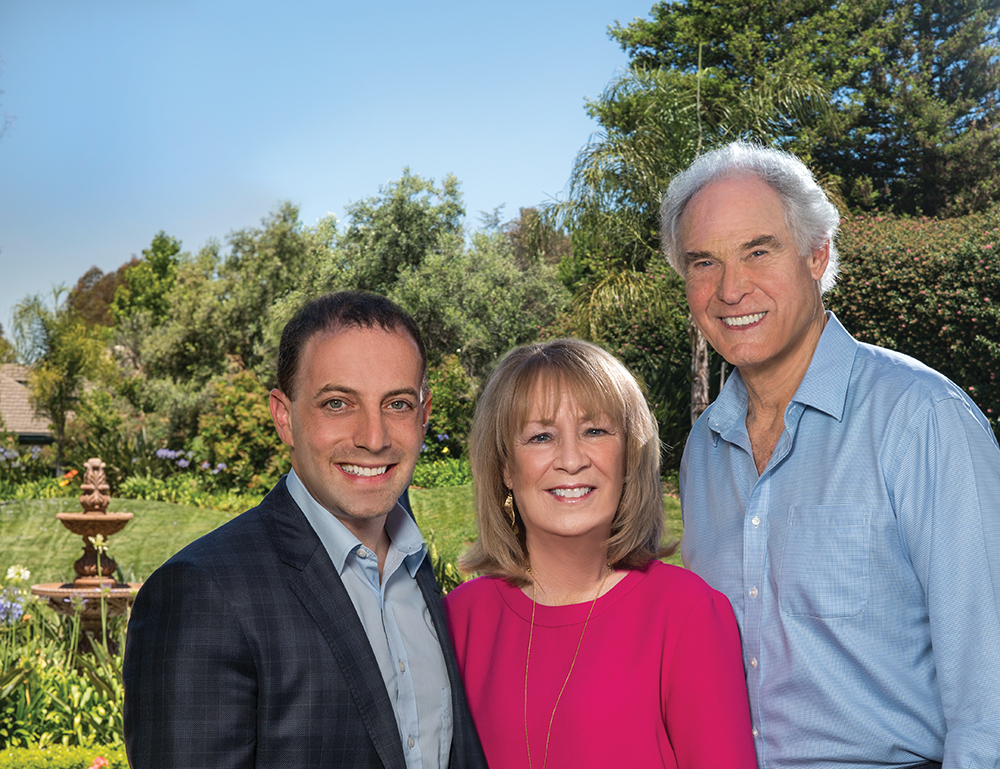Finding Focus

Finding Focus
Vision of Children nears a cure for genetic eye disorder
Posted on June 30, 2017
When Vivian and Sam Hardage’s newborn son was diagnosed with ocular albinism more than two decades ago, few people knew anything about the genetic eye disorder. “There wasn’t a single person doing any albinism research anywhere on planet earth,” Sam recalls. Wanting to change that, the couple launched The Vision of Children Foundation (VOC). It was the start of a long, 26-year journey. “We really were starting from zero,” affirms Dr. Greg Ostrow, a San Diego-area pediatric ophthalmologist who now sits on the board of VOC. “We didn’t even know where the gene defect was.”

A lot has happened since then. After deciding on a plan to find a cure for this rare genetic disorder, the team thinks they are now on the verge of success after decades of fundraising, navigating strategic partnerships, and implementing innovative research.
Finding a cure for this particular disease may open the door for curing other genetic disorders like Alzheimer’s, Parkinson’s, and cystic fibrosis. “Anything with a well-defined genetic defect is fair game,” Ostrow says. “This is basically science fiction right now. We crossed the threshold of things we never thought we’d be able to do ten years ago, and now we’re doing them,” he says about the method of selectively editing genes to cure disease.
Ocular albinism occurs when the cells of the iris and retinal pigment epithelium (RPE) are unable to produce necessary amounts of pigment. This reduces vision, causes involuntary rapid eye movements, and increases sensitivity to sunlight. Those diagnosed with the disorder don’t often exhibit significant loss of pigmentation in the skin
or hair, like other forms of albinism.
Thanks to a three-year grant funded by VOC, research focuses on the implementation of induced pluripotent stem cells as a therapeutic technique. “Let’s say you have a genetic eye disease. We can take some of your skin cells — not your eye or something more invasive or sensitive — reprogram those cells from their adult state to an embryonic state, and get what’s called an induced pluripotent stem cell, which has potential to go anywhere in the body or be turned into any type of cell. This is significant, because the body is likely not going to mount an immune response to its own cells,” Ostrow explains.
“Then, with these induced pluripotent stem cells, we convert them into RPE, the special pigmented cells that people with albinism lack. We can grow these cells out and study them to determine what those cells are doing differently. That process gives us a better idea of what’s going on in this disease,” he says.
CRISPR, a recently developed technique for editing DNA sequences and modifying gene functions, targets exactly where the genetic problem occurs. “If we have that information, we can then repair the pluripotent stem cells, take the correct genetic material, snip out the defective DNA, replace it with correct DNA, and put it back in your cells. We then grow out your newly repaired cells with the hope of reintroducing them into your body to restore function,” Ostrow says. The next step is learning exactly when to put the repaired cells into the eye. “This is the research that VOC is currently supporting, which will hopefully be the final steps to finding a cure,” he adds.
Finding a cure for this particular disease may open the door for curing other genetic disorders like Alzheimer’s, Parkinson’s, and cystic fibrosis
To even get to this point, VOC needed to implement unorthodox research strategies. Since 2000, they have held nine symposiums, where researchers from around the world share unfinished, in-progress research — something many scientists have been historically reluctant to do. The Hardages and Ostrow agree this transparency of information has been a major component of why the research has accelerated toward a cure.
VOC has also funded several different labs, which were required to gear their research for a cure. Now that the research has narrowed and the goal may be within sight, the organization has determined which labs seem to be moving faster toward that finish line, and with the most accuracy. Three labs at UCLA are continuing the research under the current grant. VOC also partners with San Diego-based Illumina, which provides genetic testing for VOC’s network of families through its iHope Program.
They all believe that it’s highly possible this cure could be identified within the remaining two years of the current three-year grant. Their excitement about this major medical breakthrough is palpable. They’re hoping the charity’s annual gala on September 8, which features rock star Gary Puckett at Fairbanks Ranch Country Club, and is run by VOC board member Jacki Johnson Widder, will raise enough funding to support the remaining years necessary, and move ever closer to a cure for ocular albinism. 858.314.7917, visionofchildren.org Jackie Bryant
Photo by Vincent Knakal





One Comment
Stephanie
Great work on reaching this level of research & discovery. Very exciting that a cure is so close!